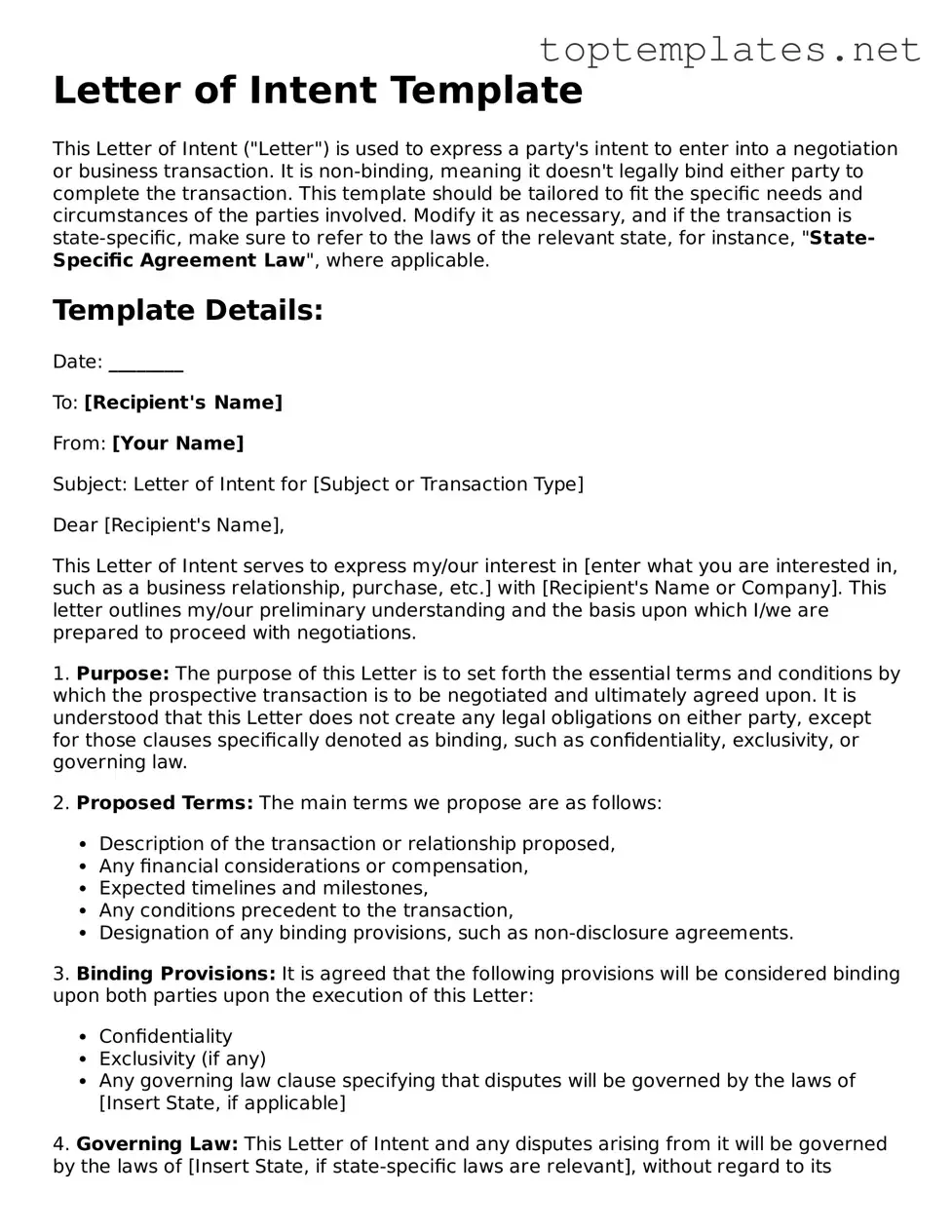Letter of Intent Template
This Letter of Intent ("Letter") is used to express a party's intent to enter into a negotiation or business transaction. It is non-binding, meaning it doesn't legally bind either party to complete the transaction. This template should be tailored to fit the specific needs and circumstances of the parties involved. Modify it as necessary, and if the transaction is state-specific, make sure to refer to the laws of the relevant state, for instance, "State-Specific Agreement Law", where applicable.
Template Details:
Date: ________
To: [Recipient's Name]
From: [Your Name]
Subject: Letter of Intent for [Subject or Transaction Type]
Dear [Recipient's Name],
This Letter of Intent serves to express my/our interest in [enter what you are interested in, such as a business relationship, purchase, etc.] with [Recipient's Name or Company]. This letter outlines my/our preliminary understanding and the basis upon which I/we are prepared to proceed with negotiations.
1. Purpose: The purpose of this Letter is to set forth the essential terms and conditions by which the prospective transaction is to be negotiated and ultimately agreed upon. It is understood that this Letter does not create any legal obligations on either party, except for those clauses specifically denoted as binding, such as confidentiality, exclusivity, or governing law.
2. Proposed Terms: The main terms we propose are as follows:
- Description of the transaction or relationship proposed,
- Any financial considerations or compensation,
- Expected timelines and milestones,
- Any conditions precedent to the transaction,
- Designation of any binding provisions, such as non-disclosure agreements.
3. Binding Provisions: It is agreed that the following provisions will be considered binding upon both parties upon the execution of this Letter:
- Confidentiality
- Exclusivity (if any)
- Any governing law clause specifying that disputes will be governed by the laws of [Insert State, if applicable]
4. Governing Law: This Letter of Intent and any disputes arising from it will be governed by the laws of [Insert State, if state-specific laws are relevant], without regard to its conflict of law principles.
5. Acceptance: If you agree to the terms outlined in this Letter, please sign and return a copy of the Letter by [insert return deadline]. This will confirm our mutual intent to proceed in accordance with the terms outlined above, while recognizing that neither party is legally bound to complete the transaction except with respect to the binding provisions specified.
Please contact me/us at [Your Contact Information] if you have any questions or require further clarification.
Thank you for considering this Letter of Intent. I/we look forward to the possibility of working together.
Sincerely,
[Your Name]
[Your Signature, if sending a hard copy]
Agreed and Accepted:
[Recipient's Name]
[Recipient's Signature, if sending a hard copy]
Date: ________
